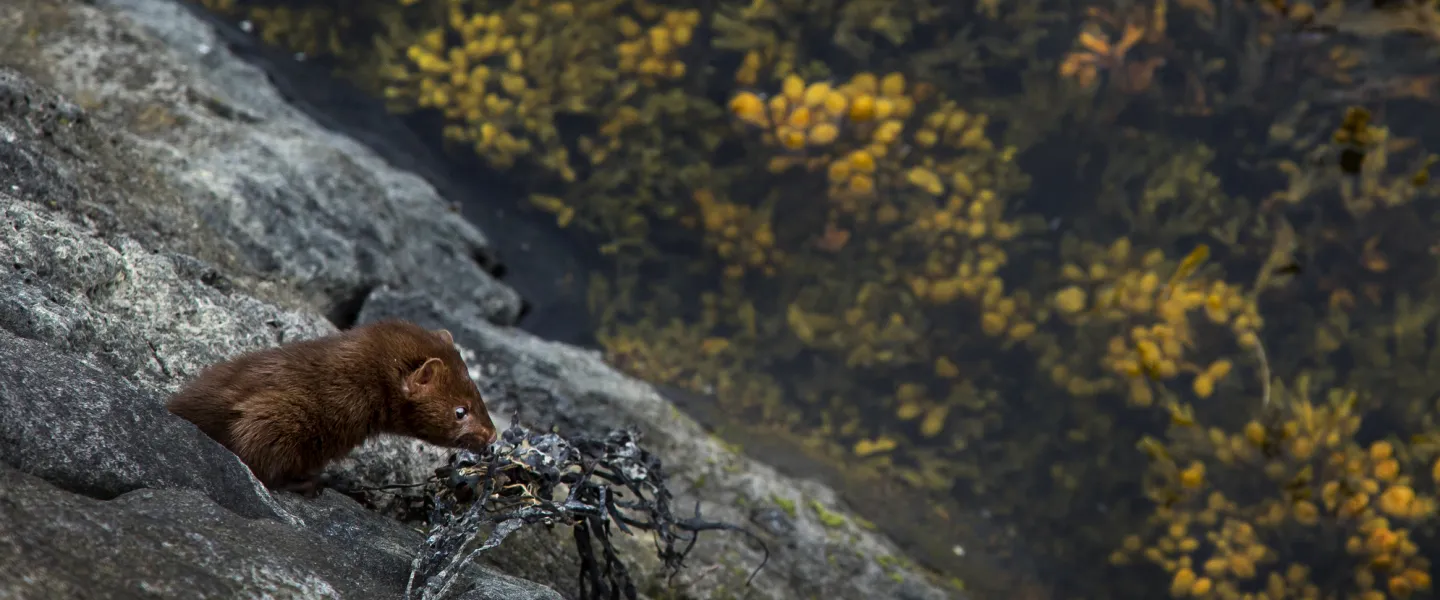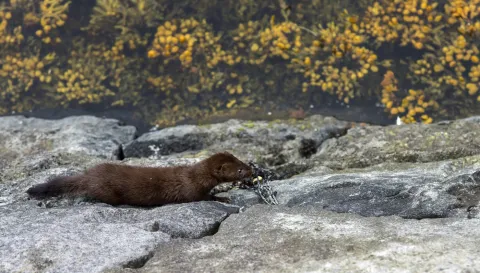
Can the invasive American mink, often considered an aggressive species, appear to be friendly? It might surprise some people, but the answer is yes. At any rate, this was the conclusion of a study conducted by the University of Iceland, the West Iceland Nature Research Centre, the University of Oxford and Stockholm University. These findings raise important questions about mammalian aggression in general and the factors that influence aggression.
“This research has a rather unusual background, you might say. Many years ago, I was studying the habitat use and activity of wild mink at Lónakot on Reykjanes. I trapped live mink and fitted them with radio transmitters, so that I could find them again and monitor their behaviour. While collecting data, I observed behaviour that contradicted everything we thought we knew about mink. The American mink is a solitary species, generally believed to be highly aggressive towards other mink and related species. However, on many occasions I saw unrelated mink interacting in ways which could be interpreted as friendly,” says Menja von Schmalensee, doctoral student at UI and department head at the West Iceland Nature Research Centre.
Menja was intrigued by this unexpected behaviour and had always wanted to explore it in greater depth. Her latest research, looking at this very topic together with Róbert A. Stefánsson, director of the Nature Research Centre, and Snæbjörn Pálsson, professor at UI, has now been published in the journal Animal Behaviour. Snæbjörn is Menja’s PhD supervisor. The other members of the team are David W. Macdonald from the University of Oxford and Anders Angerbjörn from Stockholm University.
A solitary and aggressive animal becomes friendly
To better understand why mink are not always aggressive toward each other, Menja and Róbert reviewed the datasets from their behavioural research involving radio tagged mink. This data was collected in three different areas, Lónakot and the Sog river area in South Iceland and Kolgrafafjörður on the Snæfellsnes peninsula, over a period from 1996 to 2007. The data includes information about 66 tagged individuals, as well as recorded observations about the behaviour of untagged mink seen in the study areas.
Since mink are not a social species and live solitary lives defending a territory, the vast majority of Menja and Róbert’s observations were of single animals. However, there were 50 occasions on which two or more unrelated mink were seen together.
“Although 50 might not seem like a high number,” says Menja, “this is incredible data for this elusive and solitary species. We analysed these cases, looking at the specific individuals involved and how they interacted. We saw very clearly that friendly and neutral interactions were more likely to occur between tagged individuals with territories within the study area, i.e. neighbours. Aggression was more commonly observed if one or both mink were untagged strangers.”
This behaviour, when a territorial species distinguishes between neighbours and strangers and treats them differently, is a recognised phenomenon which has previously been described in several species, although never in mink.
“Often animals that make this distinction show less aggression towards neighbours, as we saw in the mink, which is known as the ‘dear enemy’ strategy. But in some cases, species, populations or individuals might exhibit the opposite behaviour, i.e. higher aggression towards neighbours compared to strangers. This has been called the ‘nasty neighbour’ strategy,” explains Menja.

